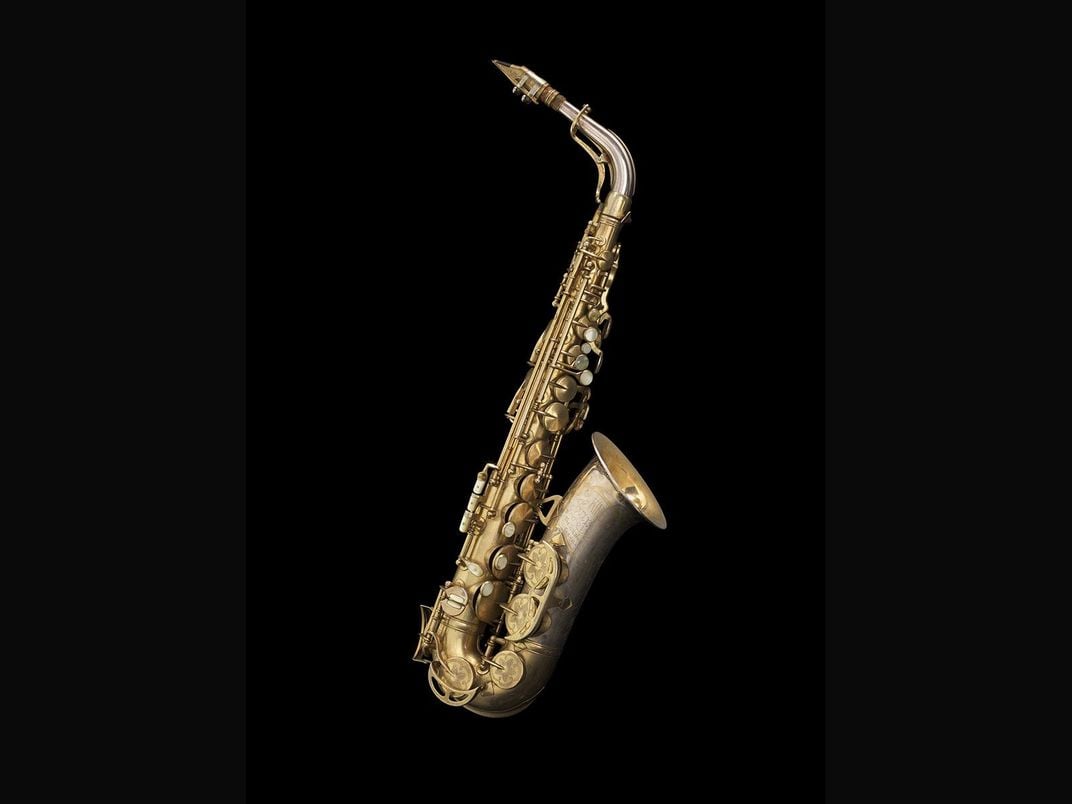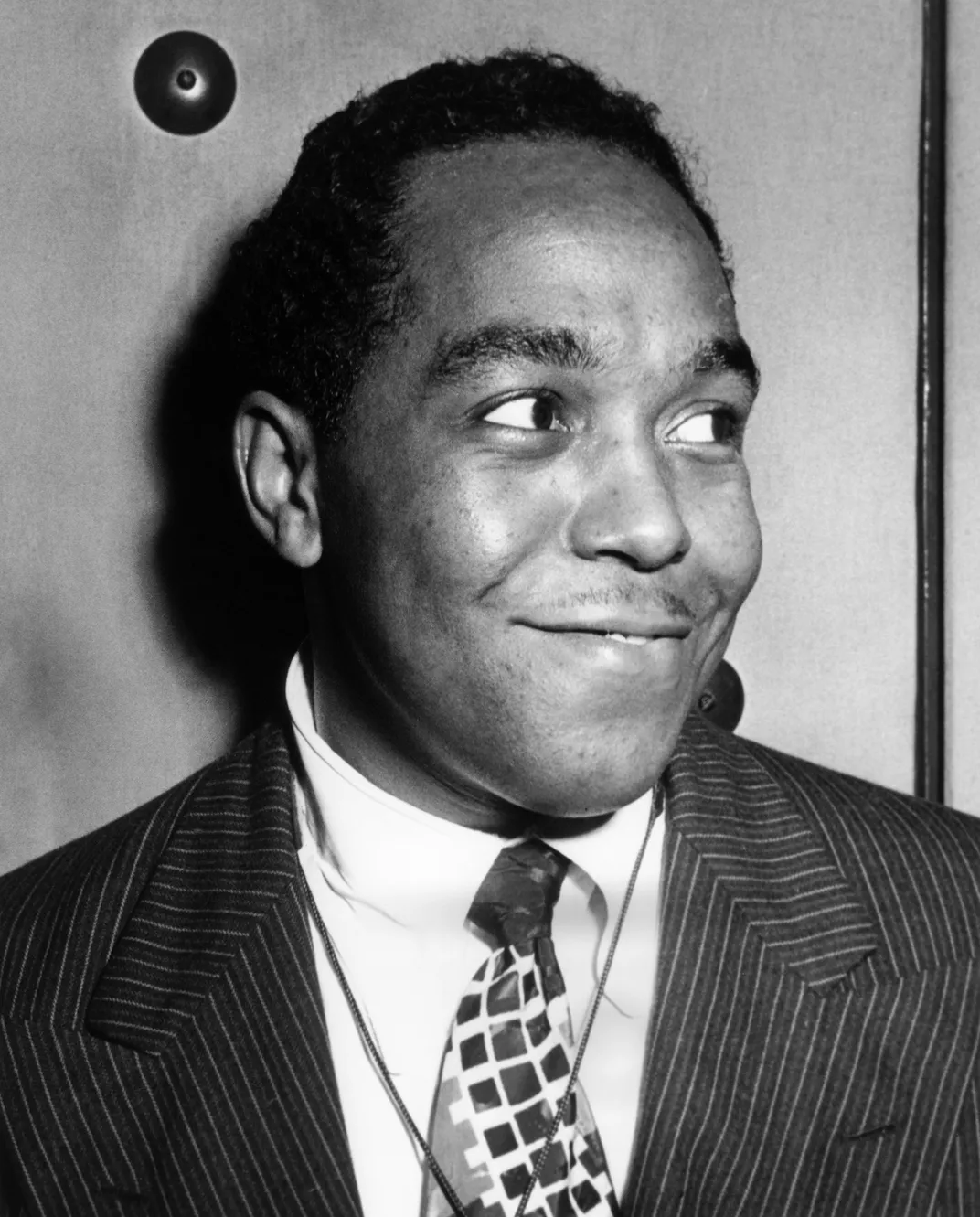The Long Journey of Charlie Parker’s Saxophone
The newly acquired instrument, played by the father of bebop, is on view at the National Museum of African American History and Culture
/https://tf-cmsv2-smithsonianmag-media.s3.amazonaws.com/filer/ac/09/ac090617-3237-405e-835f-b1e25861f825/gettyimages-3108214.jpg)
In August of 1955, Chan Parker, the widow of legendary saxophonist Charlie Parker, was in a rowboat in Bucks County, Pennsylvania, trying to save the legacy of the love of her life.
Roiling flood waters were rising in the wake of Hurricane Diane, and Parker, just months after the death of one of the fathers of bebop, was determined to get the important things out as water threatened their house located on a peninsula in Lumberville.
“She couldn’t save him in life, but she could save his remains,” says Chan Parker’s daughter Kim, who was 9 at the time. The now 73-year-old is Charlie Parker’s stepdaughter, and the two were fierce guardians of the memory of the man known by many as “Bird.”
“All the water came up overnight . . . and we had to escape. But my mother kept going back,” Kim Parker recalls. “At every opportunity, she went back because she had to get things out of that house and what she got out of the house belonged to Bird . . . which was two horns, the contracts, the paperwork, the history and the memories.”
The memories were of her life with a man described as brilliant, seminal, an innovative musician who helped change the shape of jazz as the world knew it, whose soaring, intricate improvisations continue to influence musicians today. One of those horns, the last saxophone he owned, recently went on display at the Smithsonian’s National Museum of African American History and Culture. The King Super 20 Alto sax is as beautiful, and unique, as the man who made it sing.

“This is one of two instruments that have clear provenance and connection with Charlie Parker,” explains Dwandalyn Reece, the museum’s curator of music and the performing arts. The second is a plastic saxophone on display at the American Jazz Museum in his birthplace, Kansas City, Mo.
“But the instrument we have is actually one that he acquired in late 1947, and was custom-made for him. It is really a unique instrument both in its style and substance, and really is the one associated with the bebop Charlie Parker sound,” Reece says.
Looking at the instrument, one feels as if the metal would feel molten, if you could run your fingers along its shimmering body, or caress its keys. The body is made of brass, and it has an engraved sterling silver bell with a floral design and Charlie Parker’s name. Some of the keys have mother of pearl inlays. It is simply beautiful. Reece says it was made for him after Parker got an endorsement deal in December 1947 with Cleveland’s H.N. White Company—later known as King’s Musical Instruments. Parker picked it up from Manny’s Music Store in Midtown Manhattan.
“It has a large bore bell (the flared part of the instrument) which offered a kind of unique, what some people describe as a throaty timbre,” Reece explains. “He could effortlessly switch it to a dark and velvety tone. Parker was able to switch between different sounds in his playing and dealing with harmonies and melodies.”
Reece says it also has distinct fingering, which made Parker’s prowess and virtuosity as an instrumentalist even more astounding. The museum believes it was the horn Parker played on his seminal album Charlie Parker with Strings, released in 1950 on Mercury Records. It has no pictures to prove it, but Reece says it’s a high probability that he was playing that horn most of the time from 1947 until he pawned it shortly before his March 1955 death.
“He had a substance abuse problem and he was known for pawning several of his instruments to acquire funds to support his addictions,” Reece says. “His health started failing way before 1955 just because of the abuse of drugs and alcohol, and when the coroner did his report, he was identified as a 50- or 60-year old man when he was actually just the young age of 34.”
But Parker was so much more than his addictions.

“He’s right up there with Louis Armstrong who really shaped the landscape of jazz and the way that he influenced not only . . . jazz but the direction of American music,” Reece says. “Bebop is a more personal and cerebral kind of music and he influenced instrumentalists and vocalists. Think of Ella Fitzgerald scatting . . . which is really a way of improvising that takes simple chords but makes them more complex.”
Charlie Parker was born August 29, 1920, in Kansas City. By the time he was 15, the alto saxophone was his instrument of choice. Parker dropped out of school that year to pursue a full time musical career. He had already begun to develop the improvisational style that ended up transforming jazz. Parker did his first recording in 1940, with Jay McShann’s swing band. By 1945, Parker was involved in the first bebop recording session with Dizzie Gillespie and Miles Davis. Parker’s deconstruction of musical melodies allowed him to take chords on a journey that turned his solos into fiery, bouncing masterful journeys with previously untried rhythm and phrasing.
His work on classic tunes from “A Night in Tunisia,” “Billie’s Bounce,” “Just Friends” and “Yardbird Suite” turned the jazz world on its ear. In 1949, Parker made his European debut at the Paris International Jazz Festival and was treated like royalty. That same year, the legendary Birdland Club, named after Parker, opened in New York City. Legend has it that Parker got his nicknames—“Bird” and “Yardbird,” either because he was free as a bird, or because he accidentally hit a chicken (known as a yard bird) while driving on tour with the band.
But in the 1950s, Parker again became addicted to heroin and alcohol. His physical and mental health deteriorated, despite the efforts of his common-law wife, Chan Berg, who took on his last name. They never officially married, but had two children. When Chan Parker moved in with him in May of 1950, she brought her then 3-year-old daughter Kim.
In 1955, Parker was visiting with his friend, Baroness Pannonica “Nica” de Koenigswarter, a wealthy European patroness of jazz greats including Thelonius Monk. While resting at her Boston apartment after refusing her entreaties to go to a hospital, Parker died on March 12. Fans wrote “Bird Lives!” on the walls of jazz clubs around the world. Charlie Parker was immortalized in actor, director and long-time jazz enthusiast Clint Eastwood’s 1988 film Bird.
In her book, Chan Parker wrote about Charlie: “His courtship of death turned inward upon himself. I could do nothing but hold on, drag my feet and pull him back toward life all the time. I was hoping to postpone the inevitable. I held on until I had to let go.”
Kim Parker is a jazz singer in her own right, and says she thinks of the history of the man the public knows as Bird, and the man who was her father very separately.
“He was Daddy—he was always Daddy to me. . . . I’m the only person that got that,” Kim Parker says. “Bird was very special and I loved him very much and so my memories are very precious. I’m not stingy with him because I think they are an important link to who Bird was.”
In 1955, when Kim’s mother Chan was dragging Parker’s legacy out of their flooding home in Pennsylvania, she was just a child. The family was left with nothing. But she says the only reason that the family had the saxophones in the first place was because her mother was able to save them both from the pawnshops where her father had left them.
“The King and the Grafton—the plastic Grafton is what she rescued from the rising waters,” Kim Parker recalls. “She didn’t care about clothes or anything like that. . . . She was really diligent and very insightful.”
Kim Parker says the plastic saxophone was sold by the auction house Christie’s in the 1990s, partly because she wanted her mother to have some comfort at the end of her life. It went for $140,000. Chan Parker died in 1999. In 2017, Kim Parker says, the family arranged a private sale and the King saxophone was acquired and donated to the Smithsonian. Kim Parker was overjoyed.
“When I heard it was the Smithsonian I was just so proud, so proud because Bird was recognized as part of our history,” Kim Parker says. “I mean, Bird is never going to die.”
/https://tf-cmsv2-smithsonianmag-media.s3.amazonaws.com/accounts/headshot/allison.png)


/https://tf-cmsv2-smithsonianmag-media.s3.amazonaws.com/accounts/headshot/allison.png)